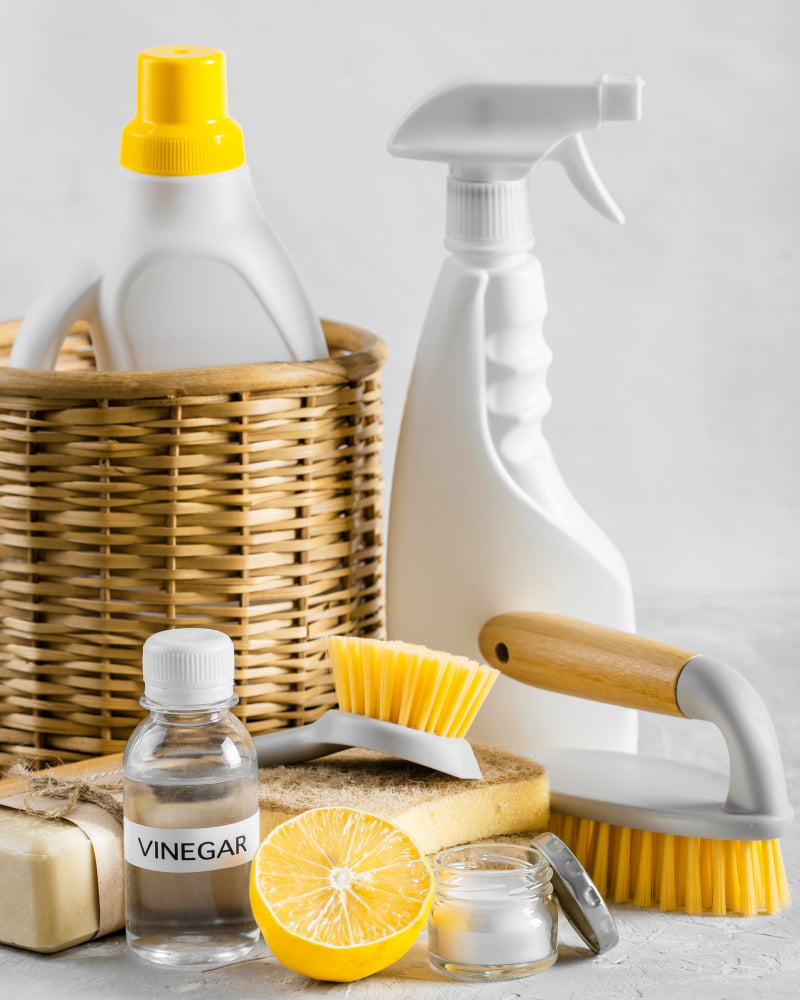Learn how to protect your family from harmful volatile organic compounds (VOCs) found in common household products with these simple tips.
As a child, I remember spending hours in my grandma’s house, exploring every nook and cranny. From the attic to the basement, there was always something new to discover.
But there was one room that always made me feel uneasy – her cleaning closet. The smell of chemicals was overwhelming, and I couldn’t help but wonder what kind of impact those products had on our health.
Years later, as an expert blogger on home air quality, I’ve learned that my concerns were valid. Many household products contain volatile organic compounds (VOCs), which can have negative effects on our health and well-being.
But don’t worry – reducing your exposure to VOCs is easier than you might think! In this article, we’ll explore what VOCs are and how they can affect us. We’ll also provide some tips for reducing your exposure so you can breathe easy in your own home.
The Hidden Dangers of VOCs

While my childhood memories of my grandma’s cleaning closet may seem harmless, the truth is that many household products contain VOCs that can have serious health consequences. These compounds are released into the air as gases from certain solids or liquids, and they’re found in a wide range of products we use every day – from cleaning supplies to paints and even furniture.
Exposure to high levels of VOCs can cause a variety of symptoms, including headaches, dizziness, nausea and eye irritation. Long-term exposure has been linked to more serious health issues such as liver damage and cancer.
The hidden dangers of VOCs are not always obvious since these chemicals often go unnoticed by our senses. But just because you don’t smell them doesn’t mean they aren’t there! It’s important to be aware of what products contain these harmful compounds so you can take steps towards reducing your exposure for better overall health.
Common Household Products With VOCs

As I grew older and started managing my own household, I realized that many of the products we use on a daily basis contain VOCs. These compounds are released into the air as gases from certain solids or liquids, including cleaning supplies, paints and varnishes, adhesives and glues, air fresheners and candles.
It’s important to note that not all VOCs are harmful – some occur naturally in our environment. However, prolonged exposure to high levels of certain types of VOCs can have negative effects on our health.
For example, benzene is a common VOC found in gasoline fumes as well as tobacco smoke. Prolonged exposure to high levels of benzene has been linked to an increased risk for leukemia.
Another common household product with potentially harmful VOCs is paint. Many paints contain solvents such as ethylene glycol or xylene which can cause headaches or dizziness when inhaled at high concentrations over time.
But don’t worry – there are steps you can take to reduce your exposure! In the next section we’ll explore some tips for minimizing your contact with these compounds so you can breathe easy at home.
Health Effects of VOC Exposure

While my childhood curiosity about the cleaning closet may have been innocent, it turns out that VOC exposure can have serious health effects. Short-term exposure to high levels of VOCs can cause eye, nose and throat irritation, headaches and dizziness.
Long-term exposure has been linked to more serious health issues such as liver damage and cancer. But don’t panic just yet – there are steps you can take to reduce your risk of VOC exposure in your own home.
One simple solution is to switch from traditional household products containing high levels of VOCs (such as bleach or ammonia) to natural alternatives like vinegar or baking soda. Another option is investing in an air purifier with a HEPA filter which will help remove any airborne pollutants including those pesky volatile organic compounds.
By taking these small steps towards reducing our daily intake of harmful chemicals we’re not only protecting ourselves but also contributing positively towards the environment by using eco-friendly options!
Identifying High-VOC Items At Home

Now that we know what VOCs are and how they can affect our health, it’s important to identify which household items contain high levels of these compounds. This will help us take the necessary steps to reduce our exposure.
As I grew older, my interest in home air quality only increased. I started paying closer attention to the products I used at home and their ingredients list.
It was eye-opening to see just how many everyday items contained high levels of VOCs – from cleaning supplies and air fresheners to personal care products like hairspray and nail polish.
To identify high-VOC items at home, start by reading product labels carefully. Look for keywords such as “fragrance,” “perfume,” or “parfum” – these often indicate a mixture of chemicals that can emit harmful VOCs into your indoor air space.
Another helpful tip is checking for certifications such as Green Seal or EcoLogo on product packaging; these certifications ensure that a product meets certain environmental standards including low-VOC emissions.
By identifying which household products contain high levels of VOCs, you’ll be better equipped to make informed decisions about what you bring into your living space – ultimately reducing your exposure over time!
Tips to Your Family’s Exposure

1. Choose natural cleaning products: Instead of using harsh chemicals, opt for natural alternatives like vinegar or baking soda.
2. Look for low-VOC options: When purchasing paint or other home improvement products, look for those labeled as “low-VOC” or “zero-VOC”.
3. Increase ventilation: Open windows and use exhaust fans when cooking or cleaning to help circulate fresh air throughout your home.
4. Avoid air fresheners: Many air fresheners contain high levels of VOCs – instead, try using essential oils or a diffuser.
By implementing these simple changes in your household routine, you can significantly reduce the amount of VOCs in the air you breathe every day – just like my grandma did after she learned about their potential harm! Remember that small steps towards a healthier environment can make a big difference over time.
Alternatives for a Low-VOC Lifestyle

If you’re like me, the thought of reducing your exposure to VOCs might seem daunting. After all, many household products contain these compounds – from cleaning supplies to furniture and even air fresheners.
But don’t worry – there are plenty of alternatives for a low-VOC lifestyle.
One easy way to reduce your exposure is by choosing natural cleaning products. Many companies now offer non-toxic options that are just as effective as their chemical-laden counterparts.
You can also make your own cleaners using simple ingredients like vinegar and baking soda.
When it comes to furniture, look for pieces made from solid wood or bamboo instead of particleboard or MDF (medium-density fiberboard). These materials often contain formaldehyde, a common VOC found in building materials.
Consider swapping out synthetic air fresheners for essential oils or natural candles made with soy wax and essential oils. Not only will these options smell great without harmful chemicals but they can also provide aromatherapy benefits!
By making small changes in our daily lives we can significantly reduce our exposure to VOCs while still enjoying clean homes and pleasant scents!